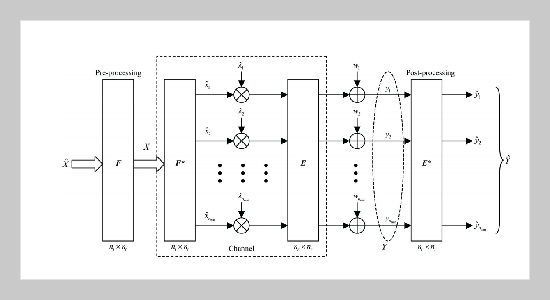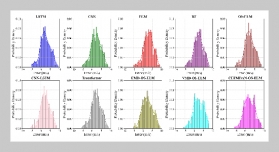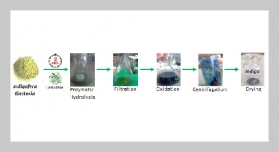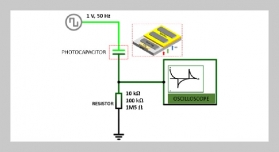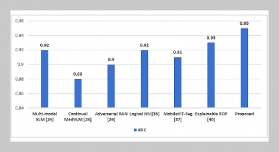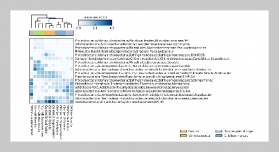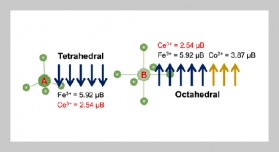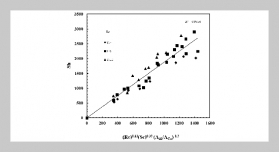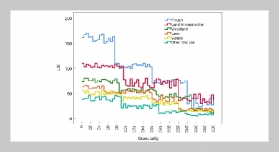REFERENCES
- [1] Yang, L. and Giannakis, G. B., “Ultra-Wideband Communications: An Idea Whose Time Has Come,” IEEE Signal Processing Magazine, Vol. 21, pp. 26�54 (2004).
- [2] Roy, S., Foerster, J. R., Somayazulu, V. S. and Leeper, D. G., “Ultrawideband Radio Design: The Promise of High-Speed, Short-Range Wireless Connectivity,” Proceedings of the IEEE, Vol. 92, pp. 295�311 (2004).
- [3] “FCC Notice of Proposed Rule Making, Revision of Part 15 of the Commission’s Rules Regarding UltraWideband Transmission Systems,” Federal Communications Commission, Washington, DC, ET-Docket 98-153 (2000).
- [4] Abdulkareem Adinoyi and Halim Yanikomeroglu, “Practical Capacity Calculation for Time-Hopping Ultra-Wide Band Multiple-Access Communications,” IEEE Communications Letters, Vol. 9, pp. 601�603 (2005).
- [5] Tomaso Erseghe, “Capacity of UWB Impulse Radio with Single-User Reception in Gaussian Noise and Dense Multipath,” IEEE Trans. Communications, Vol. 53, pp. 1257�1262 (2005).
- [6] Fernando Ram´lrez-Mireles, “On the Capacity of UWB over Multipath Channels,” IEEE Communications Letters, Vol. 9, pp. 523�525 (2005).
- [7] Li, W., Gulliver, T. A. and Zhang, H., “Performance and Capacity of Ultra-Wideband Transmission with Biorthogonal Pulse Position Modulation over Multipath Fading Channels,” 2005 IEEE International Conference, pp. 225�229 (2005).
- [8] Andrea Goldsmith, Syed Ali Jafar and Nihar Jindal, “Capacity Limits of MIMO Channels,” IEEE Journal on Selected Areas in Communications, Vol. 21, pp. 684�702 (2003).
- [9] Loyka, S. L., “Channel Capacity of MIMO Architecture Using the Exponential Correlation Matrix,” IEEE Communications Letters, Vol. 5, pp. 369�371 (2001).
- [10] Ziri-Castro, K. I., Scanlon, W. G. and Evans, N. E., “Prediction of Variation in MIMO Channel Capacity for the Populated Indoor Environment Using a Radar Cross-Section-Based Pedestrian Model,” IEEE Trans. Wireless Communications, Vol. 4, pp. 1186�1194 (2005).
- [11] Tang, Z. and Mohan, A. S., “Experimental Investigation of Indoor MIMO Ricean Channel Capacity,” IEEE Antennas and Wireless Propagation Letters, Vol. 4, pp. 55�58 (2005).
- [12] Browne, D. W., Majid Manteghi, Fitz, M. P. and Yahya Rahmat-Samii, “Experiments with Compact Antenna Arrays for MIMO Radio Communications,” IEEE Trans. Antennas and Propagation, Vol. 54, pp. 3239� 3250 (2006).
- [13] Malik, W. Q., Mtumbuka, M. C., Edwards, D. J. and Stevens, C. J., “Increasing MIMO Capacity in UltraWideband Communications through Orthogonal Polarizations,” 2005 IEEE 6th Workshop on Signal Processing Advances in Wireless Communications, pp. 575�579 (2005).
- [14] Zheng, F. and Thomas Kaiser, “On the Evaluation of Channel Capacity of Multi-Antenna UWB Indoor Wireless Systems,” ISSSTA2004, pp. 525�529 (2004).
- [15] Channel Modeling Sub-committee Report Final, IEEE Std. p802.15-02/368r5-SG3a, 18 November (2002).
- [16] Zhao, Y., Hao, Y., Akram Alomainy and Clive Parini, “UWB On-Body Radio Channel Modeling Using Ray Theory and Subband FDTD Method,” IEEE Trans. Microwave Theory and Techniques., Vol. 54, pp. 1827�1835 (2006).
- [17] Zhang, Y. and Brown, A. K., “Complex Multipath Effects in UWB Communication Channels,” IEE Proc.- Commun., Vol. 153, pp. 120�126 (2006).
- [18] Richardson, P. C., Xiang, W. and Wayne Stark, “Modeling of Ultra-Wideband Channels within Vehicles,” IEEE Journal on Selected Areas in Communications, Vol. 24, pp. 906�912 (2006).
- [19] Driessen, P. F. and Foschini, G. J., “On the Capacity Formula for Multiple Input-Multiple Output Wireless Channels: A Geometric Interpretation,” IEEE Trans. Communications, Vol. 47, pp. 173�176 (1999).
- [20] Tila, F., Shepherd, P. R. and Pennock, S. R., “Theoretical Capacity Evaluation of Indoor Micro- and MacroMIMO Systems at 5 GHz Using Site Specific Ray Tracing,” 6th Electronics Letters, Vol. 39, pp. 471� 472 (2004).
- [21] Oh, S. H. and Myung, N. H., “MIMO Channel Estimation Method Using Ray-Tracing Propagation Model,” 14th Electronics Letters, Vol. 40 (2004).
- [22] Muqaibel, A., Safaai-Jazi, A., Bayram, A., Attiya, A. M. and Riad, S. M., “Ultrawideband Through-theWall Propagation,” IEE Proc.-Microw. Antennas Propag., Vol. 152, pp. 581�588 (2005).
- [23] Chen, S. H. and Jeng, S. K., “An SBR/Image Approach for Indoor Radio Propagation in a Corridor,” IEICE Trans. Electron., Vol. E78-C, pp. 1058�1062 (1995).
- [24] Chen, S. H. and Jeng, S. K., “SBR Image Approach for Radio Wave Propagation in Tunnels with and without Traffic,” IEEE Trans. Veh. Technol., Vol. 45, pp. 570� 578 (1996).
- [25] Susana Loredo, Alberto Rodríguez-Alonso and Rafael P. Torres, “Indoor MIMO Channel Modeling by Rigorous GO/UTD-Based Ray Tracing,” IEEE Trans. Veh. Technol., Vol. 57, pp. 680�692 (2008).
- [26] Balanis, C. A., Advanced Engineering Electromagnetics, John Wiley & Sons (1989).
- [27] Iskander, M. F. and Yun, Z., “Propagation Prediction Models for Wireless Communication Systems,” IEEE Trans. Microwave Theory and Technique, Vol. 50, (2002).
- [28] Malik, W. Q. and Edwards, D. J., “Measured MIMO Capacity and Diversity Gain with Spatial and Polar Arrays in Ultrawideband Channels,” IEEE Trans. Commun., Vol. 55, pp. 2361�2370 (2007).
- [29] Jakes, X. C., Microwave Mobile Communication, New York: Wiley (1974)


